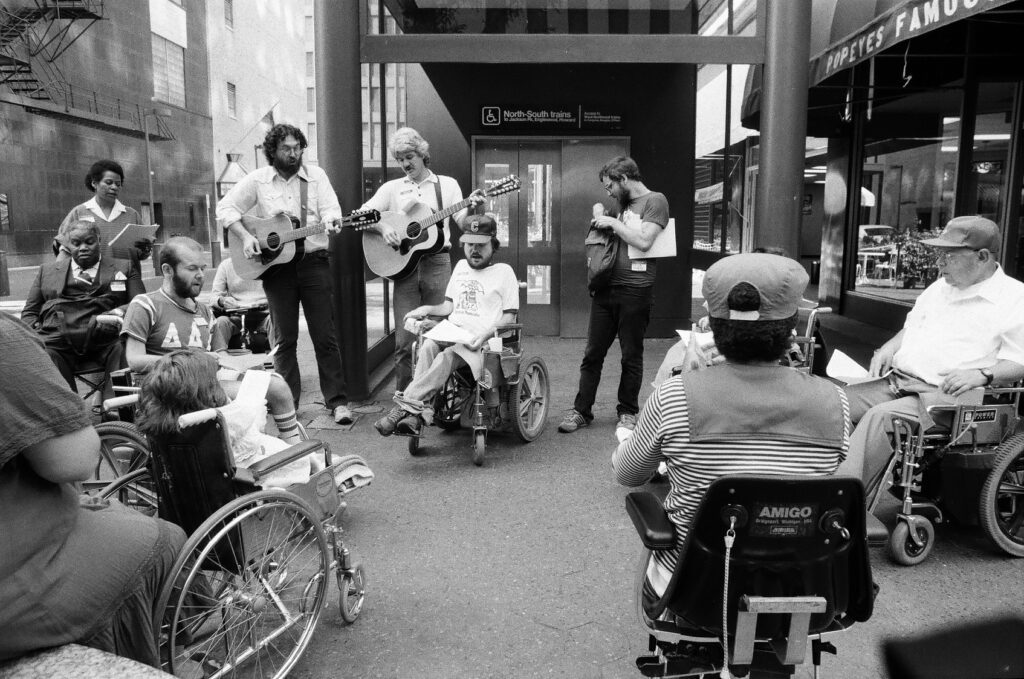Our mission at Values Into Action is to partner with people with disabilities to design and live their best lives. We believe that everyone should be welcomed and accepted in their communities—and that starts with making sure people can get where they need to go.
In August 1984, a group of disability advocates called ADAPT took a stand in Chicago. They blocked public buses to demand wheelchair lifts, so people with disabilities could ride just like everyone else. Their protest helped change the rules and made public transportation more fair and accessible for everyone.
The Problem: Public Transit Wasn’t for Everyone
At the time, most public buses didn’t have wheelchair lifts. This meant many people with mobility disabilities couldn’t use public transportation. Without access to buses, they were left out of jobs, schools, and community life.
The Protest: ADAPT Takes Action
ADAPT, which formerly stood for Americans Disabled for Accessible Public Transit, organized a protest in Chicago. Activists blocked buses with their wheelchairs and chanted, “We will ride!” to demand equal access. Their peaceful protest got national attention and showed how unfair the system was.
The Outcome: Legal Action and Lasting Change
The protest led to a lawsuit against the Chicago Transit Authority. The court ruled that buses must have wheelchair lifts. This was a big win for disability rights and helped lead to the Americans with Disabilities Act (ADA) in 1990.
The Legacy: Inclusion in Motion
ADAPT didn’t stop with public transit. They continue to fight for independent living and full inclusion. Their work reminds us that accessibility is a right, not a privilege.
Why It Matters Today
Even today, some transportation options are not fully accessible. ADAPT’s story shows us that change is possible when people speak up. We must keep working to make sure everyone can get where they need to go.
The ADAPT protests remind us how important it is to speak up and take action. Public transportation has become more accessible for people with disabilities. Their story shows what’s possible when people work together to make change.
We’re proud to stand with people with disabilities as they design and live their best lives, no matter how they get around the community. Let’s keep moving forward—together!
Featured Image courtesy of: Chicago Sun-Times collection, Chicago History Museum
